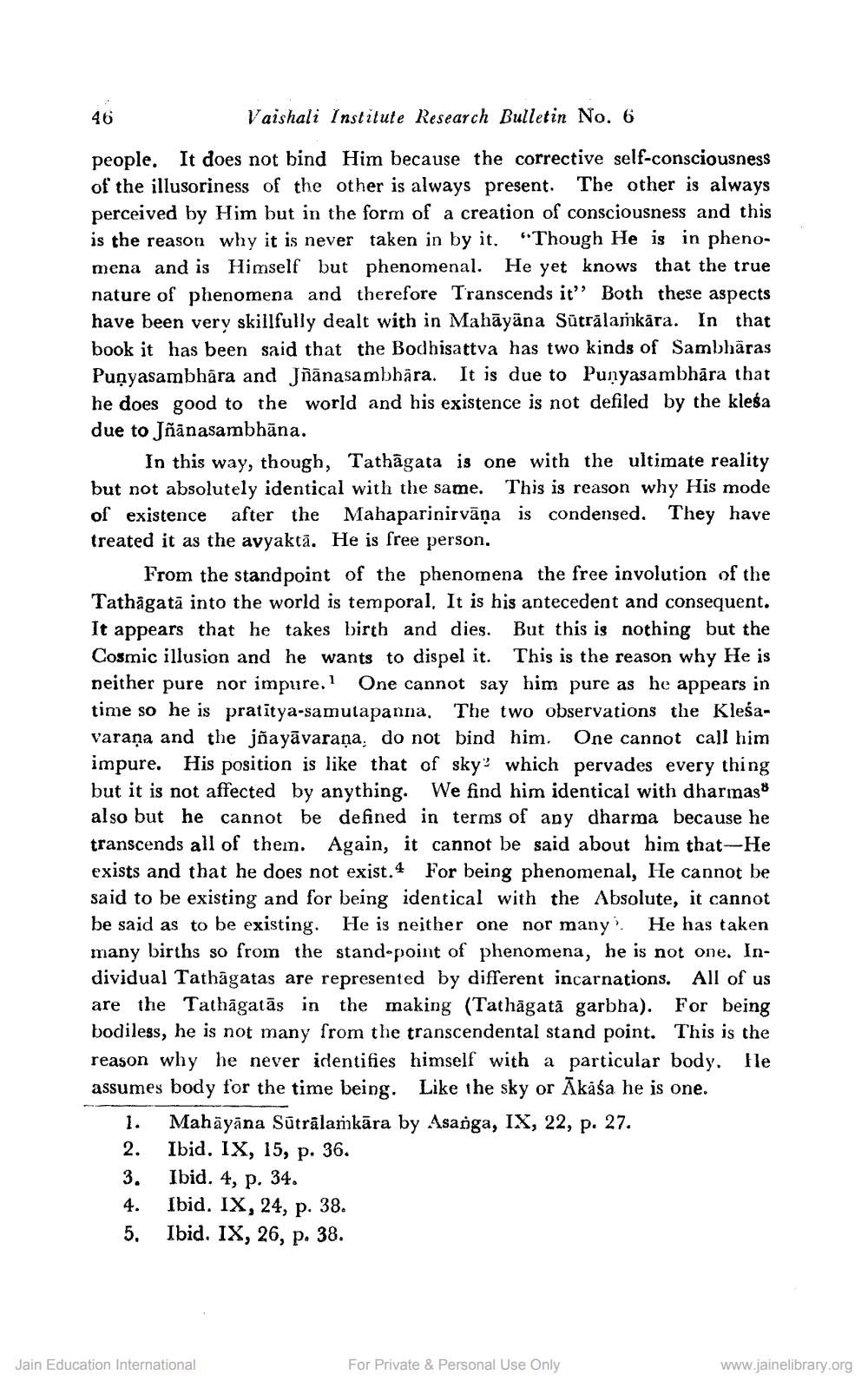________________
Vaishali Institute Research Bulletin No. 6
people. It does not bind Him because the corrective self-consciousness of the illusoriness of the other is always present. The other is always perceived by Him but in the form of a creation of consciousness and this is the reason why it is never taken in by it. "Though He is in phenomena and is Himself but phenomenal. He yet knows that the true nature of phenomena and therefore Transcends it" Both these aspects have been very skillfully dealt with in Mahāyāna Sütrālaṁkara. In that book it has been said that the Bodhisattva has two kinds of Sambharas Punyasambhāra and Jñanasambhāra. It is due to Punyasambhāra that he does good to the world and his existence is not defiled by the kleśa due to Jñanasambhāna.
46
In this way, though, Tathāgata is one with the ultimate reality but not absolutely identical with the same. This is reason why His mode of existence after the Mahaparinirvāṇa is condensed. They have treated it as the avyaktā. He is free person.
From the standpoint of the phenomena the free involution of the Tathāgata into the world is temporal. It is his antecedent and consequent. It appears that he takes birth and dies. But this is nothing but the Cosmic illusion and he wants to dispel it. This is the reason why He is neither pure nor impure. One cannot say him pure as he appears in time so he is pratitya-samutapanna. The two observations the Kleśavarana and the jñayāvaraṇa, do not bind him. One cannot call him impure. His position is like that of sky which pervades every thing but it is not affected by anything. We find him identical with dharmas also but he cannot be defined in terms of any dharma because he transcends all of them. Again, it cannot be said about him that-He exists and that he does not exist. For being phenomenal, He cannot be said to be existing and for being identical with the Absolute, it cannot be said as to be existing. He is neither one nor many. He has taken many births so from the stand-point of phenomena, he is not one. Individual Tathāgatas are represented by different incarnations. All of us are the Tathagatās in the making (Tathāgata garbha). For being bodiless, he is not many from the transcendental stand point. This is the reason why he never identifies himself with a particular body. He assumes body for the time being. Like the sky or Akāśa he is one.
1.
2.
3.
4.
5,
Mahāyāna Sūtrālaṁkāra by Asanga, IX, 22, p. 27.
Ibid. IX, 15, p. 36.
Ibid. 4, p. 34.
Ibid. IX, 24, p. 38.
Ibid. IX, 26, p. 38.
Jain Education International
For Private & Personal Use Only
www.jainelibrary.org




